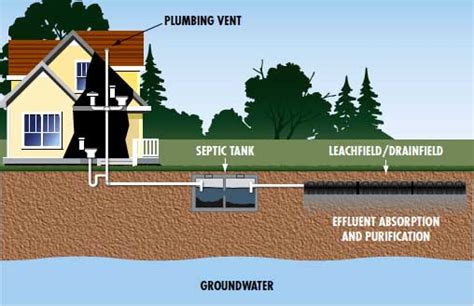How to Locate Your Septic Tank: A Comprehensive Guide
Finding your septic tank might seem daunting, but with the right information and techniques, it's a manageable task. Knowing its location is crucial for maintenance, repairs, and avoiding accidental damage. This guide provides several methods to help you pinpoint your septic system's location.
Why Locating Your Septic Tank is Important
Before diving into the methods, let's understand why knowing your septic tank's location is so vital:
- Prevent Accidental Damage: Construction projects, landscaping, or even planting trees near your septic tank can cause costly damage. Knowing its location helps you avoid these mishaps.
- Efficient Maintenance: Regular septic tank pumping and inspection are essential for proper functioning. Knowing the location saves time and effort during these crucial maintenance tasks.
- Troubleshooting Issues: If you experience septic system problems, knowing the location facilitates quicker access for repairs or assessments by professionals.
- Property Value: A well-maintained septic system directly impacts your property's value. Knowing its location simplifies the process of demonstrating proper upkeep to potential buyers.
Methods to Find Your Septic Tank
Several methods can help you locate your septic tank. Let's explore the most common and effective approaches:
1. Reviewing Property Records
Check Your Property Documents: Begin your search by reviewing your property records. These documents, often including the original plot plan or building permits, may indicate the septic tank's location. Your county clerk's office or local government website might provide access to these documents.
2. Inspecting Previous Documents
Look for Existing Documents: If you purchased the property recently, check for any documents related to the previous owners. These documents might include inspection reports, maintenance records, or even simple diagrams highlighting the location of underground utilities, including the septic tank.
3. Searching for Visible Markers
Look for Surface Clues: Many homeowners mark the location of their septic tanks. Look for:
- Markers in the Ground: Some use PVC pipes or other markers to indicate the tank's approximate location.
- Concrete Slabs or Lids: Septic tanks may have a concrete lid or slab visible at ground level.
- Vegetation Differences: Areas around septic tanks may have different vegetation due to moisture or soil composition changes.
4. Using Technology to Help You
Consider Advanced Methods: In cases where traditional methods fail, more advanced techniques are available:
- Ground Penetrating Radar (GPR): GPR uses radar waves to detect underground objects. A professional survey using GPR can accurately pinpoint the septic tank's location.
- Septic Tank Locating Services: Specialized companies offer septic tank locating services using various methods, including GPR or other detection technologies. Their services are an excellent option for accurate and efficient results.
Important Considerations
- Safety First: Always exercise caution when searching for your septic tank. Avoid digging near potential locations without proper safety equipment and professional assistance if needed.
- Professional Assistance: If you're unable to locate your septic tank using these methods, don't hesitate to contact a professional septic service. They possess the expertise and equipment to do it safely and accurately.
By following these steps, you can effectively locate your septic tank, ensuring its proper maintenance and preventing costly accidents. Remember that knowing its location is a critical aspect of responsible homeownership.
